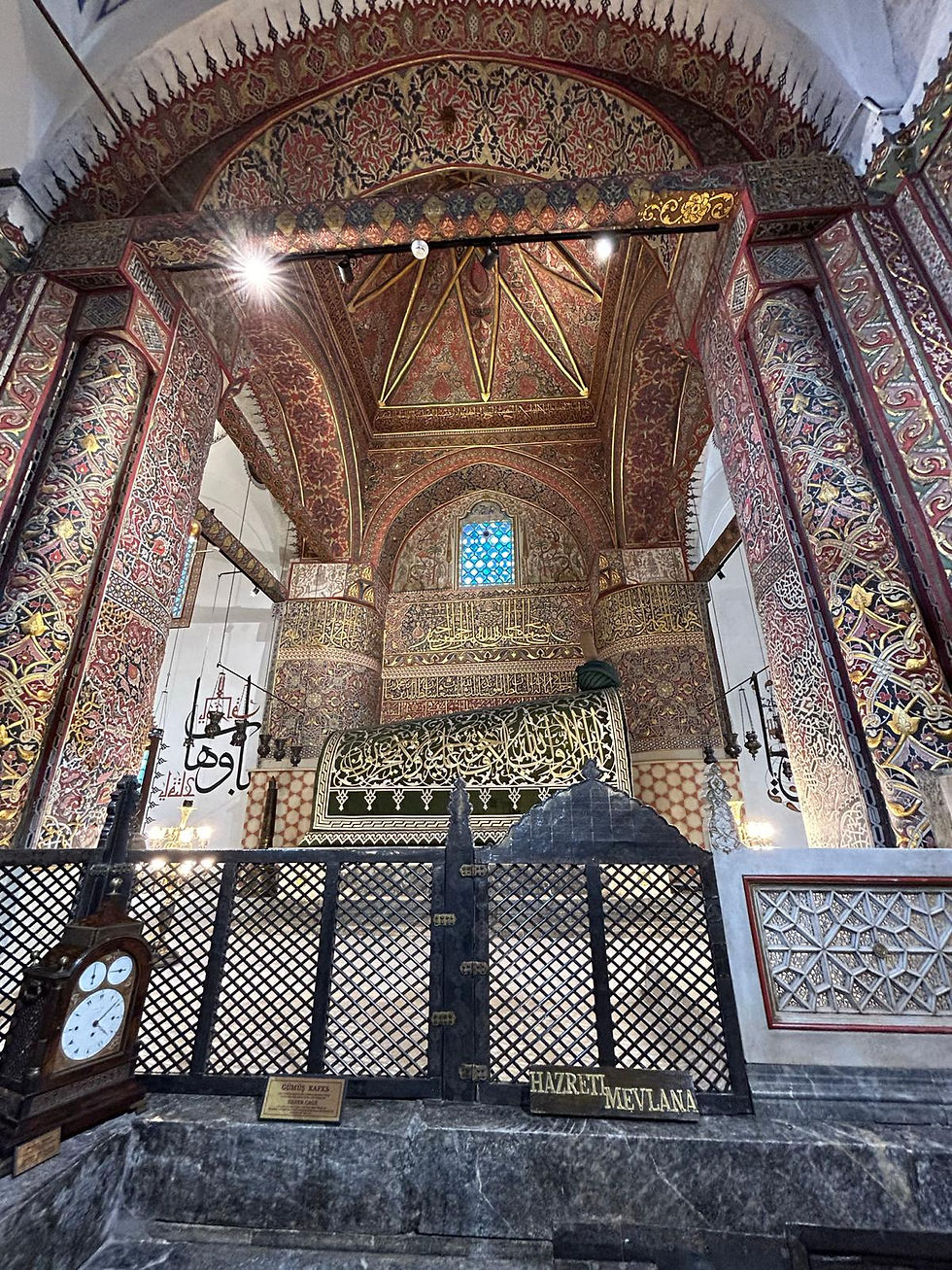Day Fourteen: Pisidian Antioch
- lizajohnson4
- Jun 3, 2024
- 4 min read
We had a very early start this morning. Breakfast started at 6am and departure was at 7am. We had to hit the road early because we had a lot of driving to do to head east away from the coast and to sleep in Konya for the night. We had a 3 hour drive to our first stop in Yalvac to visit the archeological site of Pisidian Antioch.
We were told that this part of the county is known for growing roses and producing rose oil and scented products.

The city of Antiocheia, later known as Colonia Caesereia, has a long and diverse history. It was colonized by the Seleucid Dynasty in the Hellenistic Period, around the 3rd century BC. Evidence of mound settlements around the city suggests that it dates back to the Neolithic Period. Antiocheia remained under Seleucid rule until 188 BC when it became part of the kingdom of Pergamum. In 129 BC, the city came under Roman rule and became part of the Roman territory. During the Roman Imperial Period, it was renamed Colonia Caesereia and was granted the status of a lus Italicum, meaning a free city. It also served as the capital for other Roman colonies established in Pisidia.
The most interesting part of this site was the Temple of Augustus and Sanctuary. It was built on the highest hill of the city, carved from the bedrock to create a "U-shaped" area. The temple had a lower floor made entirely of bedrock and followed the prostylos style with four Corinthian columns. The architrave of the temple featured a frieze with bull heads carrying garlands, while the upper part of the cella wall had an acanthus frieze. This area and temple, which showed traces of ancient Anatolian beliefs, were reorganized during the Roman Imperial Period for Emperor Augustus and transformed into an imperial cult site. In front of the temple, there was an altar, and behind it, there were a presentation bowl and pit used for ceremonies related to the underworld and the souls of the dead.


Somewhere near or in this temple, the Res Gestae Divi Augusti, or "The Deeds of the Divine Augustus," would have been displayed. Copies of this were displayed throughout the Roman Empire to ensure that everyone would know about his accomplishments, although the copy here in Psidian Antioch is the best preserved example. It was a first-person account written by Emperor Augustus himself, detailing his achievements and contributions during his rule on bronze tablets. Augustus emphasizes his role in establishing peace and stability in the Roman Empire after years of civil war. He highlights his efforts to restore traditional Roman values and moral standards, as well as his patronage of the arts and culture. The document also showcases his generosity towards the Roman people, such as distributing funds and providing entertainment. This kind of Imperial cult worship would have been what Paul witnessed as he was preaching the gospel of a God who gives love freely without paying a price. Although there is no Pauline letter for this city that we know of, we know from the book of Acts that Paul and Barnabas traveled to Psidian Antioch and shared the gospel with them (Acts 13:13-52).


We then drove another 3 hours to Konya. It was quite a lot of time on the bus today but I appreciated the reprieve of not being in the hot sun all day. This week has been almost 20 degrees hotter than what we experienced our first week of the trip. In Konya we visited the Mevlana Museum and Mausoleum of the famous 13th century Sufi mystic, philosopher, poet, and founder of the order of the dervishes, Mevlana (more famously known as Rumi). After taking Dr. Swanson’s Mystic class last year I was very exited to visit this museum. The women wore our head covers as a sign of respect in this holy Muslim site that is a pilgrimage for followers of Mevlana Rumi and Sufism.

The museum is situated in the complex of the 13th-century Mevlana Dervish Lodge, which was the residence of the Mevlevi Order, also known as the Whirling Dervishes. The Mevlevi Order was founded by Mevlana Rumi's followers and is known for its unique form of worship that includes the whirling dance, the Sema.
The centerpiece of the museum is the mausoleum, which houses the tomb of Mevlana Rumi. The mausoleum is an exquisite example of Seljuk architecture, characterized by its elegant domes, intricate tilework, and ornate calligraphy.

The museum also showcases handwritten manuscripts, illuminated Qurans, musical instruments, clothing, and personal belongings of Mevlana Rumi and his followers.
One of the most iconic rituals associated with the Mevlana Museum is the Sema ceremony, the Whirling Dervishes perform a mesmerizing dance accompanied by traditional music and chanting. Tomorrow night we will have the opportunity to see this traditional whirling dervish ceremony and I am really looking forward to it.
We are staying overnight in Konya where we had dinner at the hotel. Our trip is almost over, and though I am tired from the travel, I know that the last few days of our trip are full of adventure and rich culture. Tomorrow we are off to Cappadocia where more adventure awaits.
-Kylee




Comments